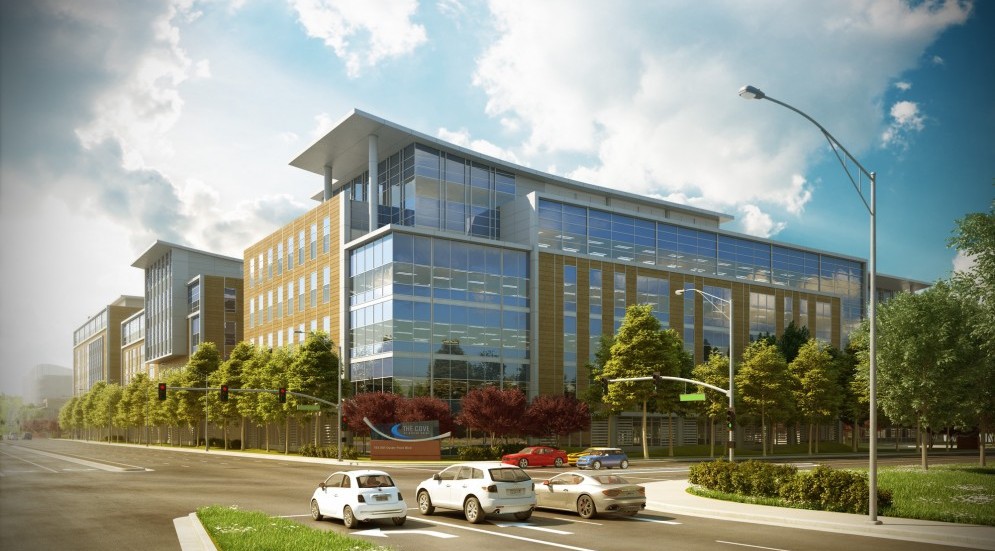JLL Report: Life Sciences Firms Flocking to the Suburbs
JLL's latest life sciences outlook report shows where companies are locating—and why.
By Keith Loria, Contributing Editor
Chicago—JLL’s annual Life Sciences Outlook Report reveals that access to talent is still a priority for life sciences companies, but costs play an important part, too.
“Despite years of retrenchment and responding to the patent cliff, life sciences companies continue to be major real estate users across the U.S.,” Roger Humphrey, JLL Life Sciences group Executive Managing Director & Leader, told Commercial Property Executive. “Companies continue to cluster around the major research institutions—but some are moving to the suburbs in search of more available space, lower rents and facilities that can support amenities-rich, inspiring workplaces that foster employee well-being and innovation.”
A noteworthy example of this is the Cove in San Francisco, currently the largest life sciences development underway in the U.S. The seven-building, 1 million-square-foot campus will feature a full-service amenities center with fitness and exercise rooms, a bowling alley, bocce ball courts, café, amphitheater and hotel space.
“Life sciences property is becoming an institutional asset class as investors come to understand that the leading clusters are self-sustaining ecosystems for real estate values,” Humphrey said. “An example of this is Morgan Stanley’s Prime Property Fund, which owns trophy office towers in New York City and Boston, and recently acquired two lab buildings in West Cambridge—200 Cambridge Park Drive for $746 per square foot and 733 Concord Ave. for $680 per square foot.”
Another example is Longfellow Real Estate Partners acquiring Keystone Technology Park, an 11-building portfolio, for $117.7 million last September in the Research Triangle area.
Even more significantly, he offered, was Blackstone Group’s acquisition of BioMedRealty Trust.
“So, the largest private equity real estate firm in the world bought the leading provider of real estate solutions in the life sciences community, for $8 billion,” Humphrey said. “BioMedRealty’s portfolio includes top-quality properties with credit tenants and long-term leases in San Francisco, Boston, San Diego and elsewhere.”
The report lists the top 10 life science clusters, with Boston coming in tops for the second year in a row, followed by the San Francisco Bay area; Raleigh Durham; San Diego, Seattle-Bellevue; Maryland Suburbs/D.C. Metro; Philadelphia; Los Angeles/Orange County; Westchester County, N.Y.; and New Jersey.
According to the report, thanks to multiple years of rising costs for talent, R&D and real estate, more companies are choosing Boston’s northwest suburbs over Boston itself, and San Francisco’s Mid-Peninsula area over the heart of San Francisco.
“R&D and business strategy talent tends to be located in cities with very high real estate costs, so you pay a premium for proximity,” Humphrey said. “Many Baby Boomers are retiring, leaving a gap, and a shift in focus to niche products has created demand for researchers with diverse specialties.”
Boston, he continued, is home to elite leading academic research institutions—Harvard and MIT being the big ones—and the top three National Institute of Health-funded hospitals in the United States.
Looking ahead, JLL expects continued acquisition and consolidation activity will offer opportunities for small- and mid-sized firms to secure space in tightening primary clusters. It also expects to see an increase in vacated legacy space and the renovation of older spaces to meet the needs of tenants.
“Life sciences tenants will continue to seek out affordable options in top clusters, resulting in secondary submarkets emerging within primary clusters, such as Boston’s Core Suburbs and the Bay Area’s Mid-Peninsula, where a moderate number of space options and development opportunities still remain,” Humphrey said. “Advances in medicine and global demographic trends point to an overall expansion of the life sciences industry. With demand still outweighing supply, asking rents for lab space will continue to rise in premier clusters.”
Furthermore, the second tier of clusters, such as Seattle, Philadelphia and Westchester County, will see more interest from developers as institutional capital floods top markets, leading more established companies to entertain the cost-savings benefits of rising markets.
Rendering courtesy of Project Management Advisors Inc.








You must be logged in to post a comment.